
The destruction of rainforests in Malaysia and Indonesia for palm oil, paper, and timber has put the world’s orangutans at risk of extinction, it also compounds global warming and mass extinction. Photo by: Singapore Zoo.
On May 22nd, zoos and aquariums around the world creatively called for action on global warming. Dubbed “Show the Wild Face of Climate Change,” the event involved over 70 institutions from 25 countries on all seven continents.
“[This] was the largest single-day global zoo event in history,” said George Rabb, President Emeritus of the Chicago Zoological Society and former Chair of the IUCN’s Species Survival Commission. “The success of this day for climate change action is a good omen for future campaigns to engage zoos to recruit their visitors and members as global citizens with responsibilities for the global commons of the atmosphere, waters, available lands, and biodiversity.”
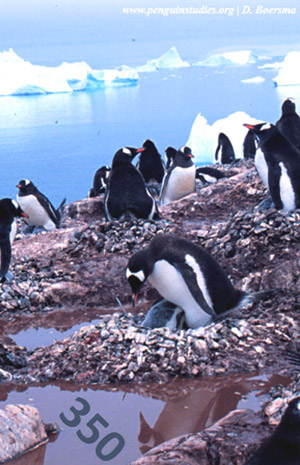 Gentoo penguins in Antarctica support 350. Global warming is impacting the distribution of prey for penguins. Photo by: Dee Boersma/Penguinstudies.org. |
In addition to holding special events and activities, zoos also took photos of over 150 species with the logo “Zoos & Aquariums for 350.” 350 refers to the parts per million (ppm) of carbon in the atmosphere that scientists have deemed relatively safe not only for humans, but life on Earth. Currently, carbon levels are at 400 ppm and rising.
Moreover, a paper last week in Science found that extinction rates are currently 1,000 times the average rate as based on fossils. Global warming is one of a number of different trends–including overexploitation, deforestation, and pollution–that is imperiling species worldwide, possibly ushering the Sixth Mass Extinction. Burning fossil fuels is not only driving warming, but also acidifying oceans, an impact that has the potential to lead to mass extinction across marine species.
The global zoo and aquarium event was a part of the UN’s International Day for Biological Biodiversity and was launched by the Conservation Breeding Specialist Group, a specialist group of the Species Survival Commission (SSC) with the IUNC. In recent years, many zoos and aquariums have taken a more active role in educating and advocating on global warming.
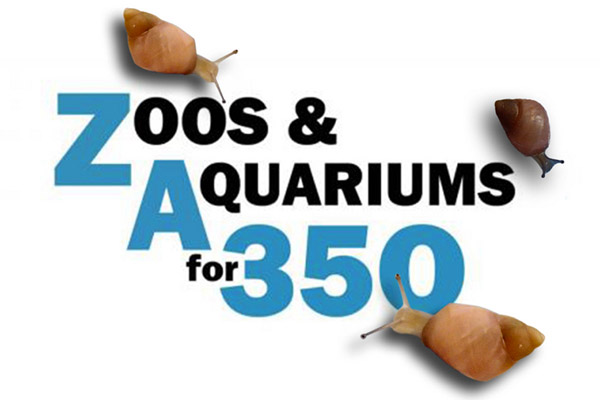
Rising oceans threaten Polynesian tree snails. Photo by: Zoological Society of London.
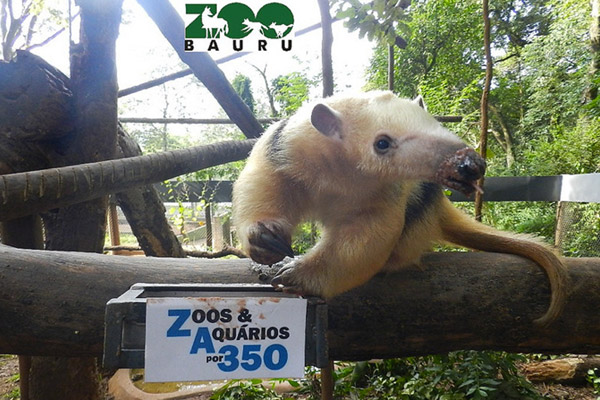
A tamandua for 350. Deforestation across Latin American threatens tamanduas and worsens global warming. Photo by: Bauru Zoo, Brazil.
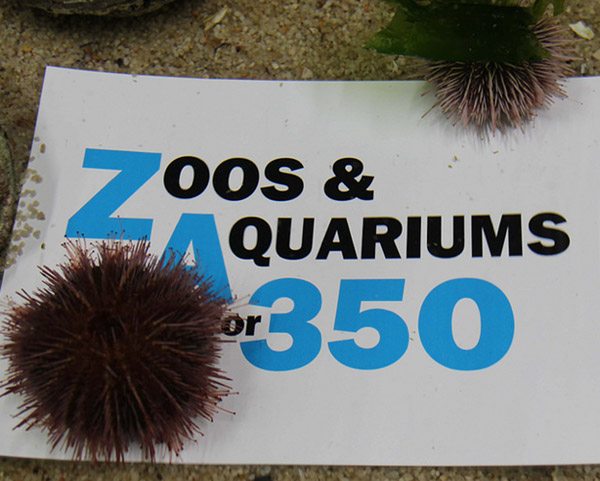
Ocean acidification is impacting sea urchins and many other marine species. Photo by: Two Oceans Aquarium, Cape Town, South Africa.
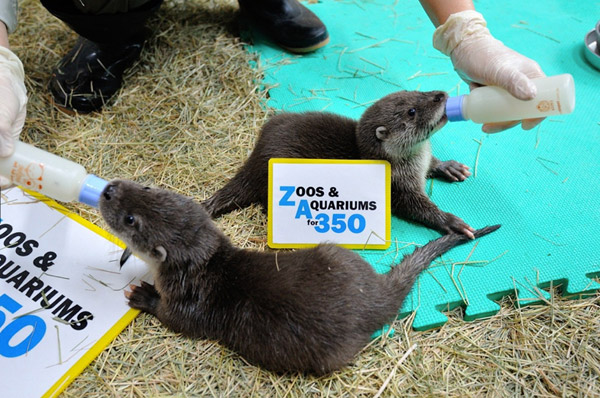
Baby Eurasian otters for 350. Photo by: Taipei Zoo.
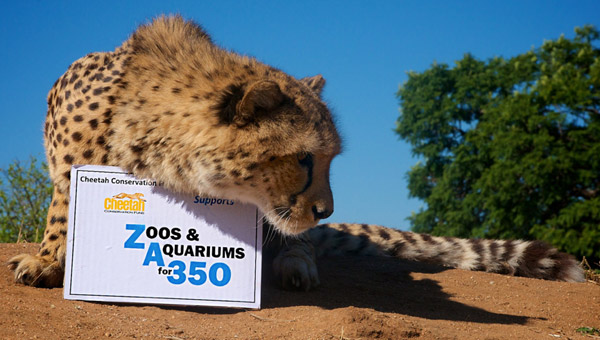
Desertification linked to climate change is eroding cheetah habitat. Photo by: the Cheetah Conservation Fund.
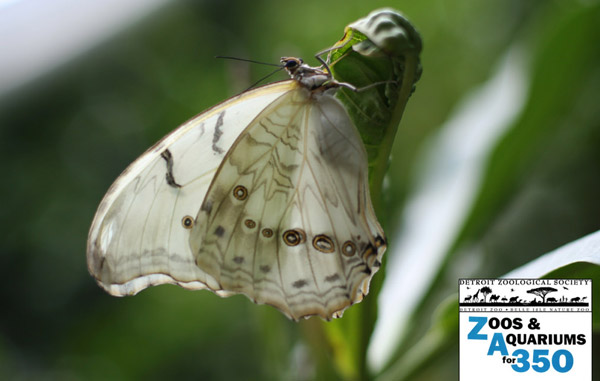
Global warming is disrupting migratory times for the world’s butterflies like this white morpho. Photo by: Detroit Zoo.
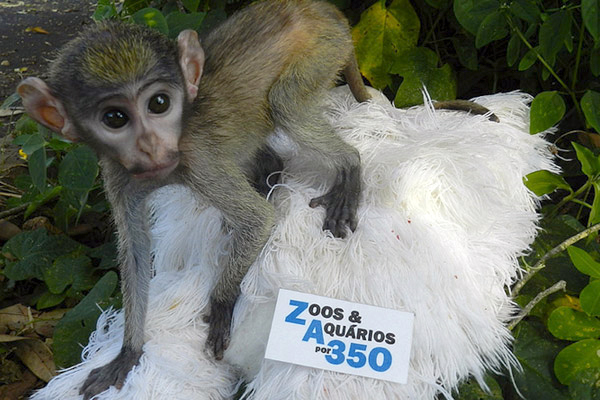
Baby macaque for 350. Photo by: Bauru Zoo, Brazil.
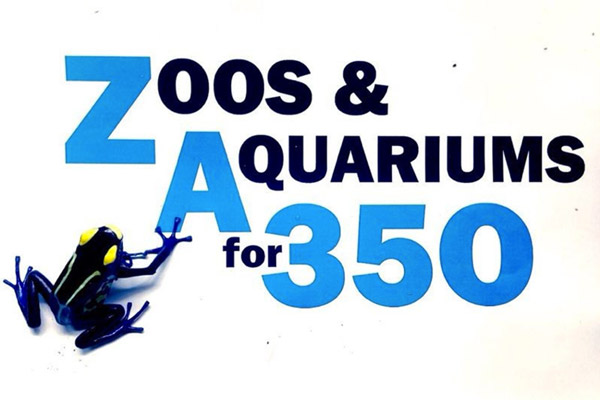
Frogs face immense challenges from climate change as they are hugely sensitive to temperature changes. Photo by: Terra Natura Benidorm, Spain.
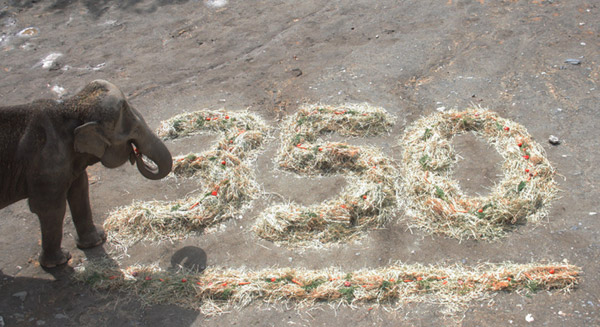
Asian elephant for 350. Photo by: Selwo Aventura, Spain.
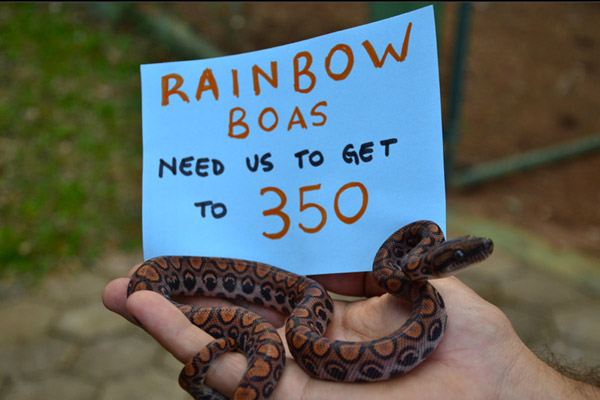
A rainbow boa. Photo by: NR Zoo, Brazil.
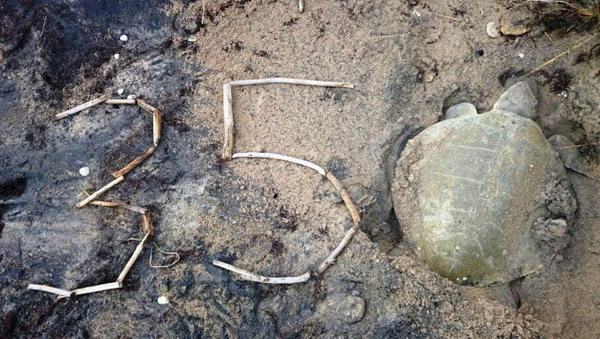
Climate change is disrupting nesting beaches, the breeding cycle and food distribution for marine turtles, like this Kemp’s Ridely sea turtle. Photo by: Gladys Porter Zoo, Texas, U.S.
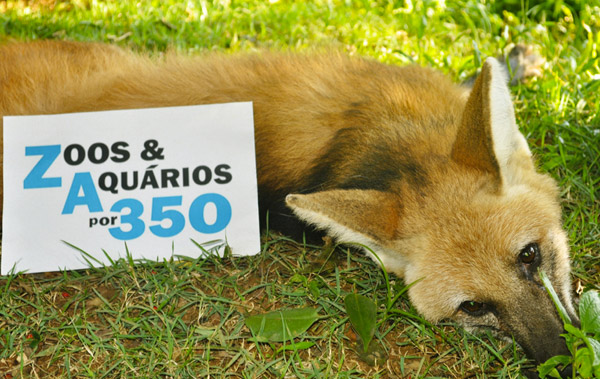
Maned wolf for 350. Photo by: Salvador Zoo, Brazil.
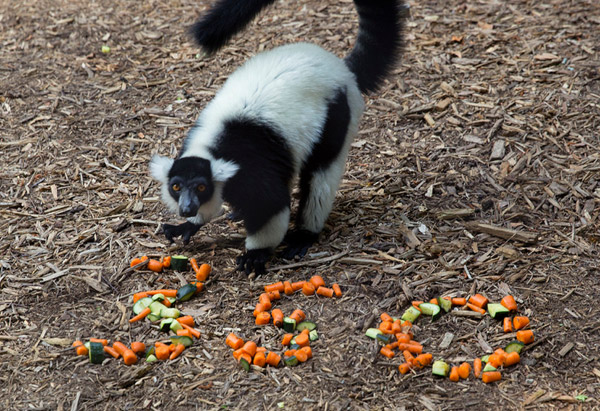
Lemurs, found only in Madagascar, are hugely imperiled by the destruction of their forests for slash-and-burn agriculture and lucrative timbers. The practice also fuels global warming. Photo by: Zoo Atlanta, Georgia, U.S.
Related articles
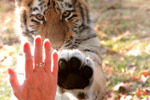
(05/19/2014) A quiet zoo revolution has also been occurring over the past twenty-five years. Rather than just stand by the sidelines as species vanish in the wild, many zoos have begun funding on-the-ground conservation efforts. This revolution signals a widening realization by zoos of the positive—and wholly unique—role they could play in combating global mass extinction. But are zoos doing enough?
Extreme cold and drought in U.S. linked to climate change

(05/23/2014) The U.S. Midwest and Northeast experienced one of the coldest, snowiest winters on record this past season. This might seem contrary to warming trends forecast by climate scientists, but a new analysis released today in Science points out that climate change caused by greenhouse gas emissions may actually have contributed to the well-below average temperatures seen in parts of the U.S.
Climate change’s ominous secret

(05/21/2014) Climate change is happening and humans are causing it, primarily from the increase in atmospheric carbon dioxide caused by burning fossil fuels. This much we know. The ‘secret’ comes from changes happening in the fast-warming Arctic: we may be surprisingly close to an Earth that supports far fewer humans than it does today.
Tipping point already reached? West Antarctica in slow-motion, unstoppable melt
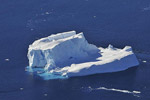
(05/14/2014) Two hundred years from now, the planet could look very different. This week two landmark studies revealed that West Antarctica’s ice sheet is in a state of seemingly inevitable collapse linked to climate change. The slow-motion collapse would by itself eventually lead to a rise in global levels of 3.6-4.5 meters (12-15 feet).
Featured video: John Oliver skewers media ‘balance’ on climate science in viral video
(05/13/2014) Sometimes you need comedians to tell the truth. On his new show, Last Week Tonight, comedian John Oliver took on the poor state of media reporting on climate science.
Underwater horrors: shells of marine life melting off the coast of the U.S.
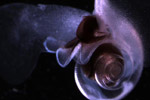
(05/08/2014) It could be the plot of a horror movie: humans wake up one day to discover that chemical changes in the atmosphere are dissolving away parts of their bodies. But for small marine life known as sea butterflies, or pteropods, this is what’s happening off the West Cost of the U.S. Increased carbon in the ocean is melting away shells of sea butterflies.
Death of young Sumatran rhino shouldn’t discourage captive breeding efforts say conservationists

(04/01/2014) Just over two weeks ago, conservationists in the Malaysian state of Sabah managed to finally catch a wild Sumatran rhino female after months of failed attempts. But following such hopeful events, comes bad news thousands of miles away: a young female rhino, named Suci, died over the weekend at the Cincinnati Zoo.
Those eyes look human: could anthropomorphism be used for conservation?

(03/28/2014) It’s easier to relate to someone you have something in common with; that feeling of connection can turn strangers into friends. And if those strangers belong to an entirely different species, then attributing human qualities to that species – a process called anthropomorphism – may aid conservation efforts by attracting public attention and funding resources.